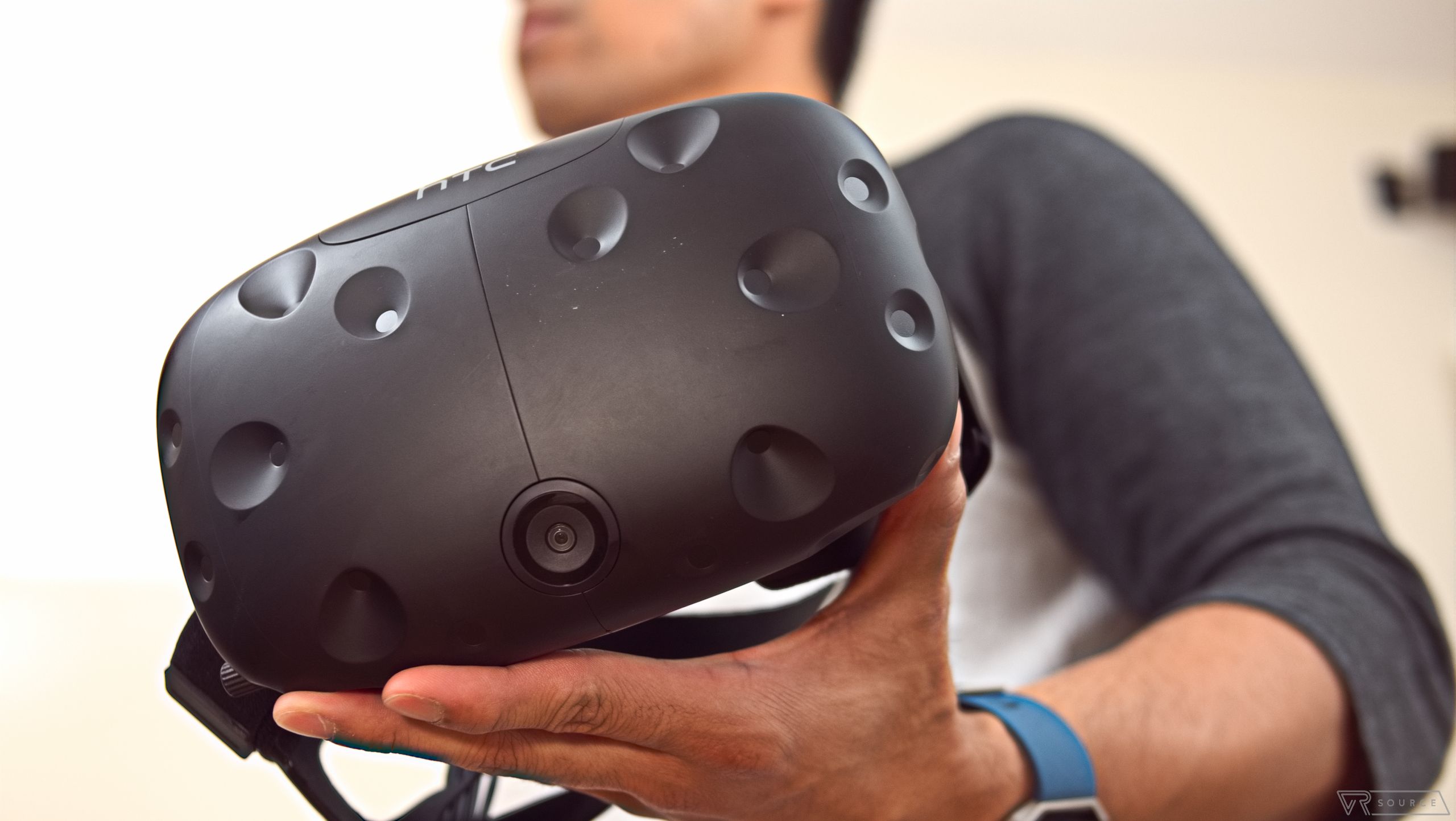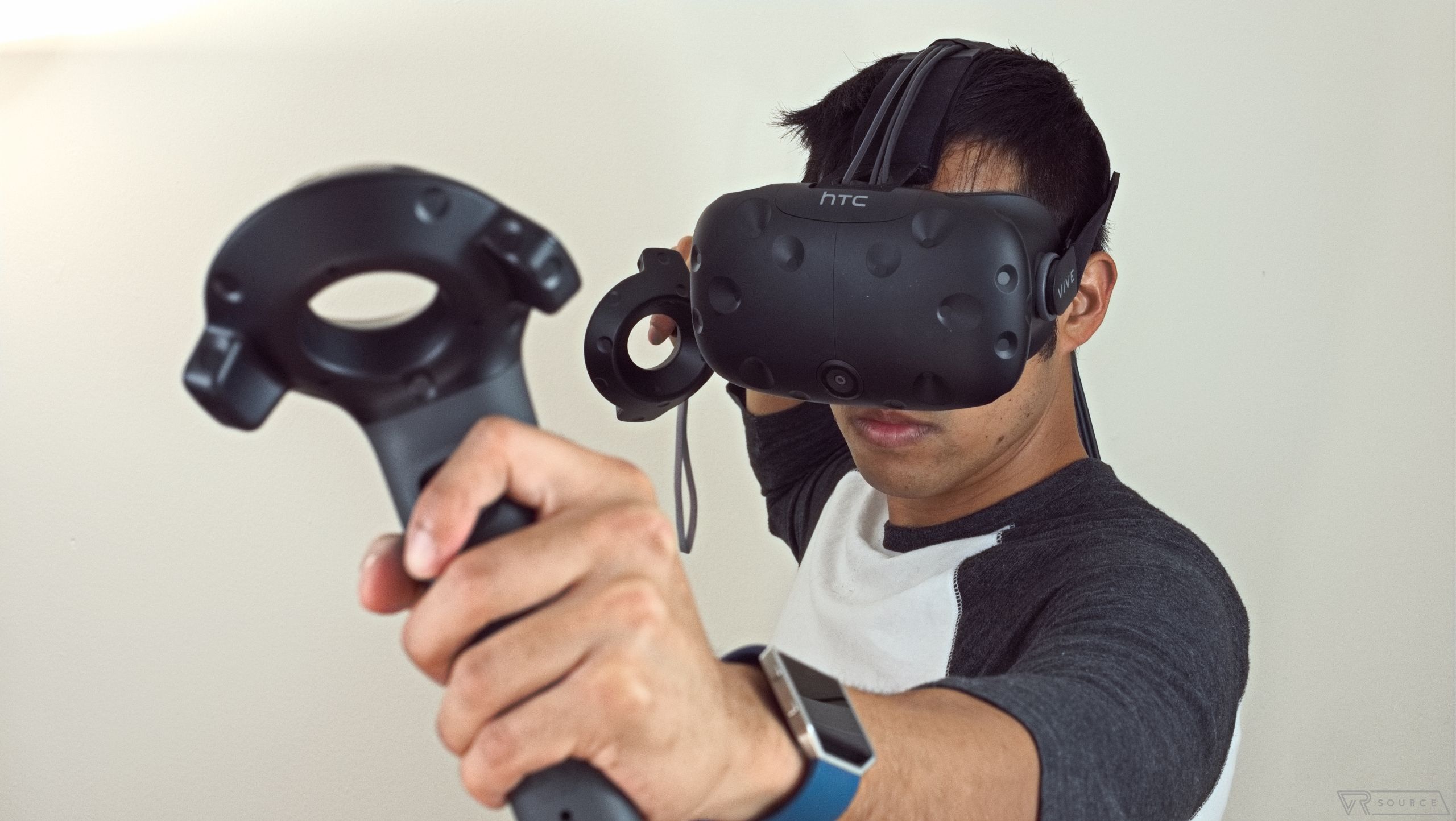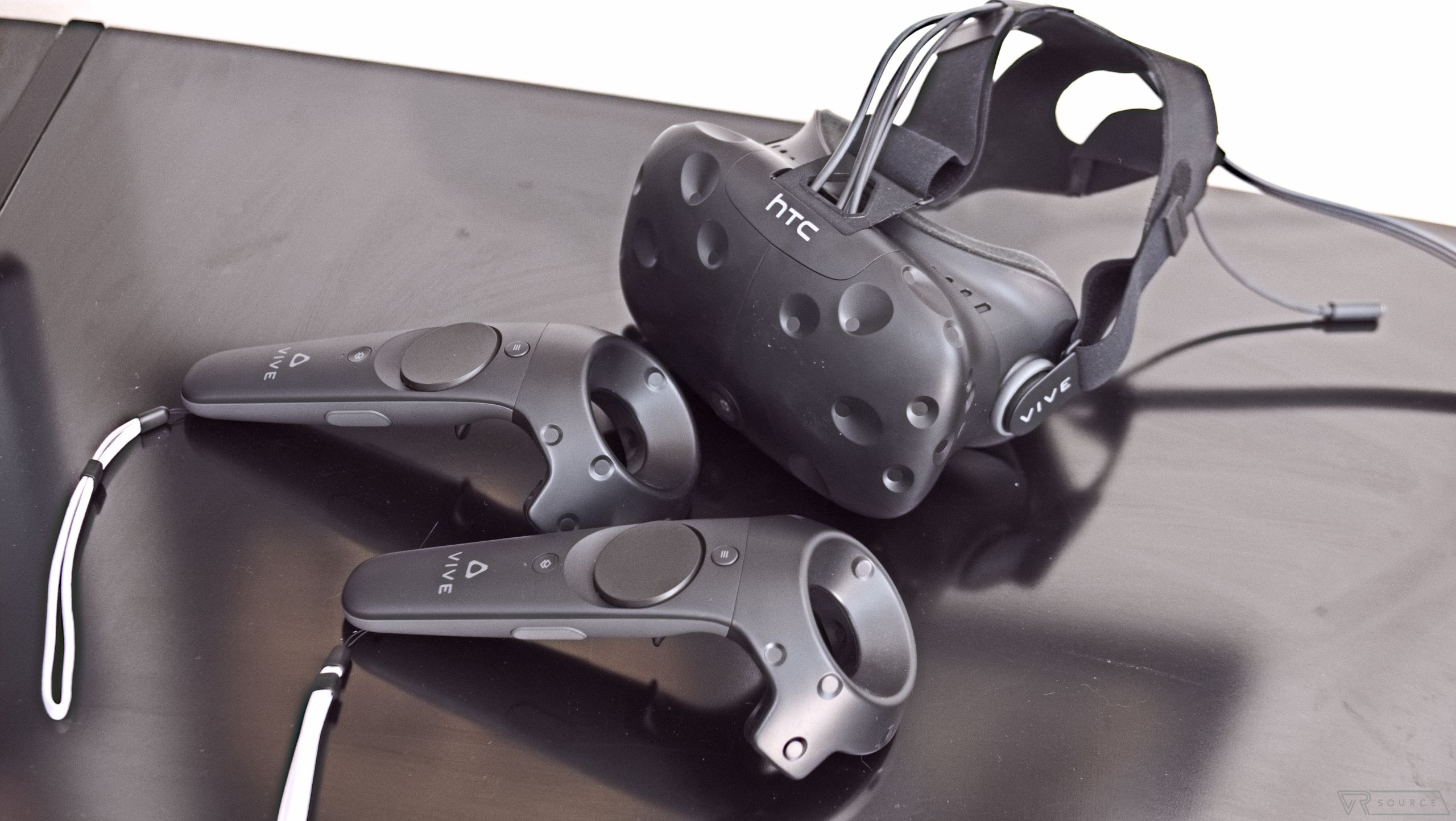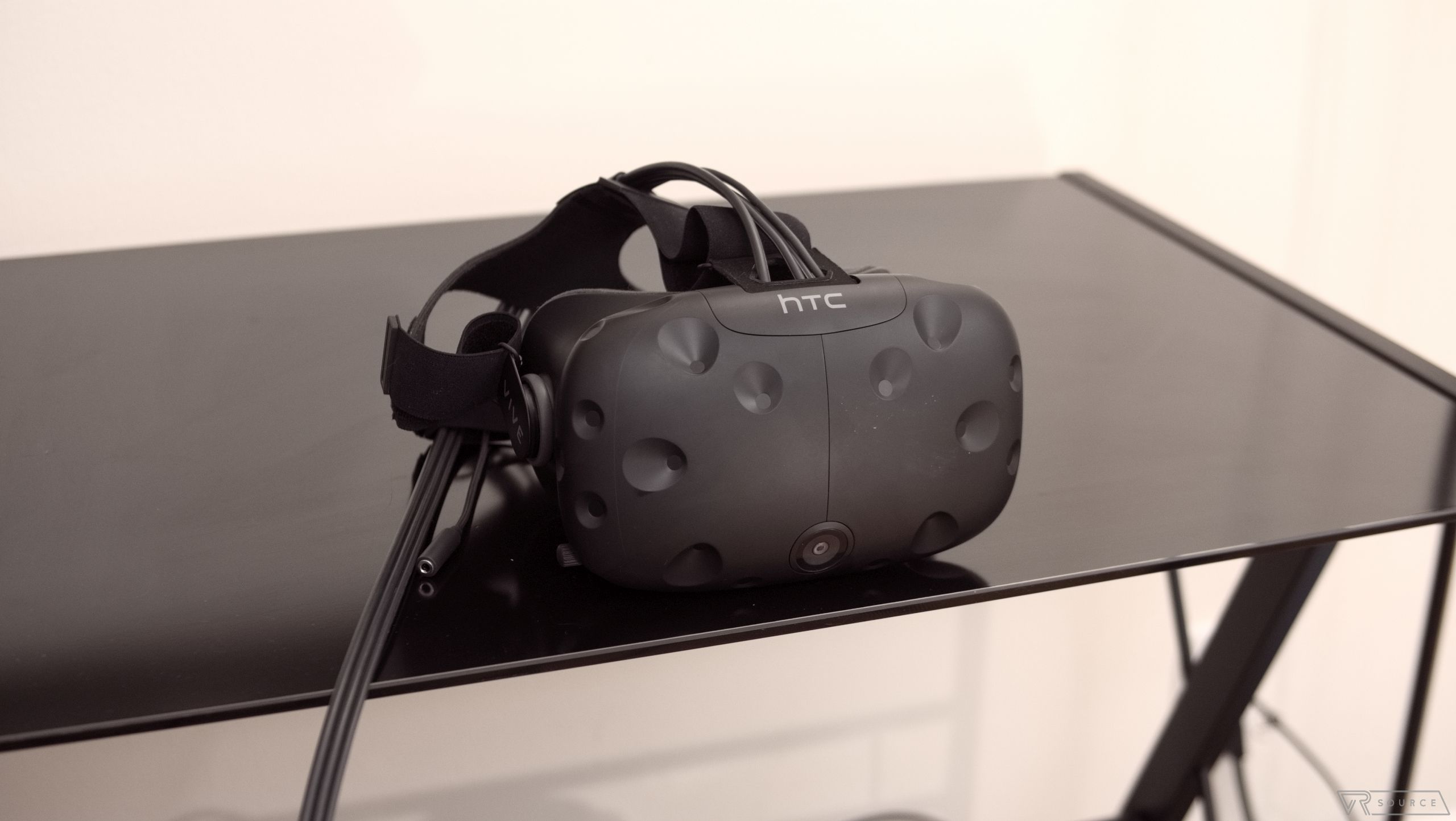Links on VR Source may earn us a commission, Learn more.
To those in the virtual reality fray, they know what the HTC Vive brings to the table. When it was unveiled for the first time well over a year and a half ago, it was not just another alternative for experiencing VR, but rather, it was a revolutionary leap like no other – one that transcended the “two- dimensional” plane of its rivals. And even now after its general availability launch, we have yet to see anything else that could potentially supplant its level of immersion.
Sure, you might’ve read countless reviews about it already, but we’ve been spending a lot of intimate time with it over the last couple of months – truly grasping its potential in delivering that realistic, virtual reality experience. We’re not late to the game with our review, oh no, but rather, we want to ensure that every aspect of the Vive is dissected. So the question still remains, is this the VR experience we’ve been waiting for?
Table of Contents
Design
We’ll cut straight to the chase and say that the HTC Vive’s design isn’t as refined as the Oculus Rift, and it clearly shows in how it relatively still has some evidence of being at the prototype level. The cratered shaped cutouts on its façade, for example, makes the design appear unfinished in a way, but they are actually there to mask the vast collection of sensors that are there. All of them work in tandem with the base stations in order to achieve its immersive VR experience. There’s also a camera lens too, which is used for an assortment of things within the VR world we’ll talk about later.
Putting on the Vive, the first thing we notice is how much weight is packed into the headset. It’s really weighty, and something that becomes more prevalent once it covers our eyes. Luckily, the adjustable Velcro straps help to keep its fastened still, but the one covering the top of our head is tougher than the sides to adjust because the Vive’s thick wires get in its way. Despite the weightiness, the padded cushion surrounding the headset helps to keep it comfortable to wear over a period of time – albeit, it’s so snug that it prevents proper ventilation, causing the lenses to fog at times.
What’s arguably the most distracting part about the design is the thick cable line coming out of it, which not only presents us with some maneuverability challenges, but we also have to be mindful about getting tangled up by them in the process. That essentially limits our ability to quickly react to things in the VR world, because if you’re not careful, it’s plausible to trip over it. Another thing worth mentioning is that you’ll have to connect a pair of headphones to the jack that’s dangling off the headset. While the included in-ear buds don’t impede us in putting on the headset, using over-the-ear styled ones means you’ll constantly need to remember to take them off first before the headset.
The Vive’s demeanor is one that’s more aggressive in tone with its industrial looking design, a stark contrast to the Oculus Rift, but a necessary one that fits the mold of what HTC has designed with its smartphones.

Setup
Receiving the packaging for the HTC Vive, most people are going to be elated by its ginormous size. It’s a hefty box that’s almost the size of what you’d expect with a small sized desktop PC, so there’s a lot of anticipation once you begin to unbox it. The included contents consist of the following items:
- Vive headset
- Link box
- 2 Vive controllers
- 2 base stations
Frankly speaking, the HTC Vive is a pain to setup and install, which unlike the Rift, requires an extraordinary amount of preplanning before strapping on the headset for the first time. Whereas it took us at the most 15 minutes getting the Oculus Rift up and running, the Vive on the other hand took us close to the hour mark. Most of our time was spent on what kind of configuration we wanted for the base stations. While the easiest solution is to just place them high on ledges, we opted instead to mount them to the wall – in order to achieve maximum coverage. This, naturally, required us to screw the base stations using the included wall mounts, so there was a fair amount of time spent on that alone.
Out of everything, you’re going to need a powerful PC rig in order to effectively run the HTC Vive – it seriously demands some hefty computing power, which is going to be yet another factor that’ll dictate buying it in the first place. In fact, if your setup doesn’t meet the minimum requirements below, you might find yourself dead in the water very quickly. So that’s something to bear in mind from the onset, as the cost alone in getting a rig that meets the minimum specifications will require an additional investment on your part – to the degree of $600+ at the lowest.
- NVIDIA GeForce GTX 970 /Radeon R9 280 equivalent or greater
- Intel Core i5-4590 equivalent or greater
- 4GB+ of RAM
- Compatible HDMI 1.3 video output
- 1x USB 2.0 port
Once that was all figured out, we were finally able to connect the Vive to our PC (after downloading & installing the necessary software). After some additional setup in getting the Vive controllers connected, as well as calibrating the entire system to scale the “play area” appropriately, we were finally completed with the entire installation process. Like we said, it’s a time consuming process on its own, so you’ll want to figure out exactly how you want to set up the base stations beforehand to save time.
VR experience
If you’re to glance over the specs sheet for the HTC Vive, you’ll realize that there’s nothing extraordinary about it that would give it an imposing advantage over the rival alternatives in the space right now. The OLED displays produce a resolution of 2160 x 1200 (1080 x 1200 per eye), which is the same as the Oculus Rift – with the two also featuring refresh rates of 90 Hz and 110-degree field of views. The separation comes down to how they execute the VR experience, as the HTC Vive’s implementation is unparalleled.
The base stations are integral in delivering that higher level VR experience, and it’s necessary to place them in opposite corners of the room you plan on using the Vive. They emit infrared beams that are not only used to map out the room, but also to establish the boundaries. And most important of all, they are used to detect and track the headset and its 37 integrated sensors – and the controllers as well, totaling 70 sensors in all. As for the camera slapped on the headset, it can actually be enabled to use the Vive’s “chaperone” mode, which essentially overlays what the camera is seeing while we’re in the virtual world. Essentially, it’s a way that enables the user to see the real world without having to take off the headset.
What’s truly amazing here is the unrivaled VR experience it delivers. So far, VR has deep roots established in the mobile sector with solutions like Google Cardboard and the Samsung Gear VR headsets being the most widely recognized. Even though you’re transported into a virtual world with them, it’s a static one at best – wherein you can essentially just “look around.” The next step up is what the Oculus Rift provides, which is above mobile VR because to an extent, seeing that it can measure spatial movement. However, it’s still very limited at that.
And then there’s the HTC Vive, which is a cerebral experience that’s unmatched at the moment – even now, months after its general release and availability. This is partly attributed by how you’re able to move around in a confined space, where you can lean forward, backwards, and even stand up or stoop down. Every minute movement is precisely tracked by the entire system! And that, folks, is what virtual reality is all about; total immersion.
Even the controllers are virtualized in the process, so depending on what game or experience you’re running, they’re visible and become our hands in the VR world. It’s utterly amazing what the HTC Vive achieves with its experience, as most firs timers are instantly mesmerized by it. Aiding in the sweet experience are the displays, which offer a mixture of clarity and potent brightness to aid in the immersion. All of this, of course, is what sets its experience apart from the rest. And there’s no one in the rear view mirror who is close to matching what it does at the moment.

The games
Games and content can be purchased and downloaded through Steam. As of right now, the HTC Vive has a budding library of content at its disposal, but it was a much different story out of the gates when it officially launched. Since then, publishers have been proactive about releasing games for it – the majority, however, continue to be mainly ports at the moment. Unfortunately, the vast majority of content built around the Vive’s framework have been largely demos; like The Labs, Tilt Brush, or Job Simulator. Don’t get us wrong, they’re fantastic in showcasing the Vive’s unique VR experience, but these games built from the ground up are more like mini-games. They’re fun for the most part, however, the enjoyment can sometimes quickly wan due to repetitiveness.
Having been around for several months now, the HTC Vive’s library of VR games have been expanded beyond just these mini-games and ports. You’ll still find many of the latter, such as the Adri1ft and Project Cars, which are titles that are also available with the Oculus Rift. While they’re fun and visually impressive in their own way, they don’t necessarily follow the Vive’s recipe in making the entire room our area of play. Rather, they’re still more of that static VR experience – wherein they can be enjoyed while sitting in front of the PC.
And this is what many people agree to be what’s limiting the Vive’s potential at the moment. In fact, there are few titles that truly harnesses each and every aspect of the HTC Vive’s higher degree of interaction. That said, there are a few gems like Raw Data — a unique shooter that pits you against robots. Things are looking even better further down the road, and there are already a few noteworthy ones that seem promising. A particular one we checked out during E3 2016, Front Defense, dishes up some interesting concepts in how it’ll differentiate from other shooters. Not only is it crucial to take cover and fire back in this first person shooter, but the Vive’s degree of interaction becomes more prevalent in the way weapons are reloaded – you need to actually remove the clip, and then reload another one.
Needless to say, some titles might end up having a frenzied pace to them, such as the case for this first person shooter. At the same time, though, we hope that developers will be mindful about changing up the gameplay mechanics every now and then – just because too much action and movement might end up alienating some folks. Still, it’ll be up to the developers to invent and innovate techniques that can best serve the Vive’s platform to its fullest potential. Few games at the moment do justice, but there’s still so much more that can be done.

Conclusion
We can’t say enough positive things about the HTC Vive, especially when its particular implementation is unrivaled. When we think of virtual reality, we envision being totally consumed and captivated by the virtual world we’re thrown into – much like what you see in many sci-fi flicks. And that’s exactly what the Vive delivers, an experience that makes us feel that we’re a part of this alternate reality. There’s just nothing else that comes to matching it….yet.
In comparison, the closest thing on the market right now is the Oculus Rift. We will say, though, that the Rift is treated to a few more noteworthy titles, but offers nowhere close to the immersion that accompanies the Vive. This is undeniably the leverage that the Vive offers, as no other platform or system can intricately mimic its performance. Despite the technological advantages it offers, there are still a couple of things preventing it from reaching mainstream success – in the near-term, that is.
First there’s the matter of its investment, which starts at $799 for the system itself. That alone is a wallet busting cost for most people, but you’ll also need to remember that you’ll need a PC rig that’ll be equipped to handle it. At the minimum, that’s probably another $600+ investment, bringing the total cost of operation to somewhere around the $1400 mark. Anyone who looks at that figure will probably be scared away, probably for a good while because of the expensive cost needed in experiencing GREAT VR. And that’s the thing, the cost means that it’s going to draw in mostly early adopters, but we really hope that as more competition enters the fray, we’ll see a price drop for it.

Secondly, the other matter relates to its gaming ecosystem, which is still lacking solid titles that showcases the Vive’s potential. Most of the titles out right now are also available on the Oculus Rift, with barely a few exclusives that the Vive can call its own – it’s just not there yet. That can be attributed probably to how the Vive doesn’t have as much of a larger user base than other rival platforms, but there’s light at the end of the tunnel because it seems that some wicked titles are on tap to release for the Vive.
The bar has been set, ensuring that the HTC Vive will remain as the undisputed champ when it comes to that VR experience we’ve all been waiting for. While it has the technological advantage, it still has a long way before being remarked as truly a revolutionary product in the minds of consumers. What’s a product without the reputation, right? Even though we’re confident that developers will no doubt innovate the gaming experience with the Vive, it’s just the amount and frequency of them that we’re worried about. Only time will tell whether or not the HTC Vive will stand the test of time.
